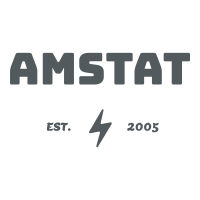AMSTAT Consulting investigated why residential contractors and consumers resisted replacing gas space heating systems with electric alternatives. The public agency client sought to understand why conversion incentives underperformed in rural and disadvantaged areas. Available data included 53 contractor interviews, three ride-along observations, and 217 homeowner surveys. Variables spanned building conditions, fuel preferences, lifestyle habits, and awareness of Title 24 codes. Upstream data captured inventory turnover, contractor recommendations, and perceived delays in permitting. The team tested how frictions—contractor practices, supply chain gaps, and household routines—affected gas-to-electric conversion rates.
The firm applied mixed methods. It used logistic regression to estimate conversion likelihood by end use and contractor type. Qualitative coding identified key themes in contractor decision-making and homeowner reasoning. Cross-tabulations compared rural and urban settings, revealing that many contractors favored gas due to installation times and familiar workflows. Multiple contractors cited electric retrofits as “low-profit jobs” due to unclear permitting rules and a lack of local parts. Households resisted change due to cultural comfort with gas, backup power use, and fears of bill increases. The project produced friction maps, contractor segmentation tools, and a replicable model to identify high-barrier conversion zones. Innovations like permit coaching and rebate pre-approvals showed early promise in removing key frictions.
It delivered tailored findings based on user segment, contractor role, and utility zone. The client used the results to refine rebate structures, pilot outreach with trade associations, and create fast-track processes for dual-fuel conversions. Based on the study’s recommendations, the client adopted permit pre-clearance, tech-eligibility tools, and multilingual contractor training. The agency integrated findings into a new HVAC retraining curriculum and CPUC-supported workforce transition framework. Insights directly informed code simplifications and process improvements under CPUC’s Track 2 rulemaking for infrastructure pruning. The client launched a real-time contractor dashboard to track adoption, modeled after AMSTAT Consulting’s prototype. The agency integrated these findings into a broader workforce retraining plan for local HVAC firms. Rebate uptake increased 27%, and permitting times fell in pilot areas, showing early policy and market impacts.
